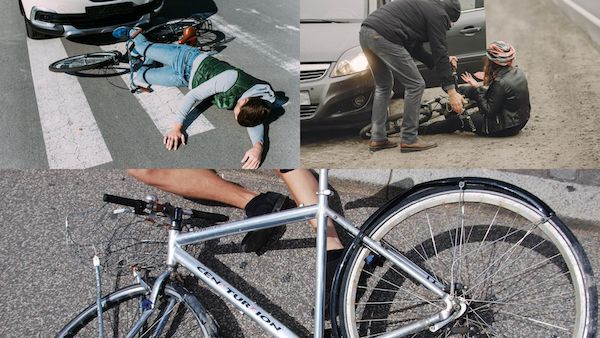The count of avoidable deaths from bicycle accidents rose by 16% in 2020, marking a 44% increase over the past decade, from 873 in 2011 to 1,260 in 2020. In contrast, the tally of preventable non-fatal injuries decreased by 39%, from 536,412 in 2011 to 325,173 in 2020.
Nevertheless, there was a 5% upturn in preventable non-fatal injuries in 2020 compared to 2019. Knowing the steps to take following a bike accident and how to manage bike accident injuries is crucial.

This knowledge can make the difference between recovering swiftly and experiencing long-term harm. If you’ve been in a bike accident resulting in head trauma, fractures, or painful cuts, dial 911 or promptly seek medical care. This article discusses what to do after a bicycle accident.
While biking offers numerous health advantages and serves as an enjoyable hobby and means of transportation, it’s essential to be informed about the actions to take after a bike accident before hitting the road.
1 Assess the Situation
Conducting a self-check for significant injuries right where you are is crucial, even before attempting to stand up. If you can do this, it’s generally a positive sign.
If you can move, confirm that all your limbs are in place and uninjured and that your perception is accurate (no multiple bikes where there’s only one).
Once you’ve verified your basic condition and mobility, promptly relocate to a secure location away from the road or any potential hazards, and then proceed with a more detailed self-assessment.
2 Slow Down
Take a few deep breaths, and during this time, conducting a thorough body check is suggested. Ask yourself if anything feels out of the ordinary. Following this assessment, attempt to gently move your hands, feet, arms, and legs. If everything seems fine, you can then stand up or, depending on your situation, reposition yourself for greater comfort.
It’s far wiser to conclude a ride prematurely than to persist with a possible knee injury, severe road abrasions, or the risk of a concussion. Your safety should always be the top priority.
3 Exchange Information
After ensuring your safety and contacting the authorities, exchange information with the other party involved. Get their name, contact information, and insurance details. Be polite and cooperative, but avoid discussing fault or liability. Leave that to the experts.
4 Document the Scene
While waiting for the authorities, documenting the accident scene is a good idea. Take photos of your bicycle, vehicle damage, road conditions, and visible injuries. This visual evidence can be valuable when dealing with insurance claims or legal matters.
5 Seek Medical Attention
Even if you feel fine, seeking medical attention after a bicycle accident is essential. Some injuries may not show up immediately, and early detection can prevent complications. Follow up with your doctor and preserve all medical records, treatments, and proof of expenses.
6 Get a Lawyer’s Help
Many bike-car accidents involve complex legal matters. Consider taking advice from a personal injury lawyer specializing in bicycle cases or who has experience with bike accident claims. A knowledgeable legal expert can:
-
- Guide you
- Negotiate with insurance firms to ensure you receive a fair settlement
- If taking the matter to court is necessary, file a lawsuit
Avoid communication with insurance companies before consulting an attorney. Anything you say to them might be used against you later.
Often, a letter from your attorney to the insurance company can resolve issues while preventing legal complications. Most injury cases are settled without going to trial.
Your lawyer may hire a bike accident specialist to investigate if the situation demands it. This expert may gather skid mark measurements, document the accident scene through photographs, interview additional witnesses, or create diagrams of the accident scene.
7 Wait for the Police
Stay put until the police arrive at the scene to create a report, even if you believe you’re uninjured. Injuries can sometimes appear later, and waiting allows for proper documentation. Additionally, police citations can be helpful for insurance claims.
Conclusion
Collecting all the supportive evidence possible and getting the right legal advice is key when dealing with a bicycle accident. You must take all these steps to avoid any mistakes while receiving compensation for your damages in an accident case.
So, if you’ve been injured in a bicycle accident, always follow all the necessary guidelines for filing such cases, no matter how trivial or significant.
Consider hiring an experienced bike accident lawyer. It will make navigating through potential legal actions easier and more successful.
Read More:

